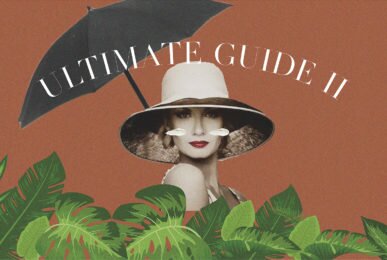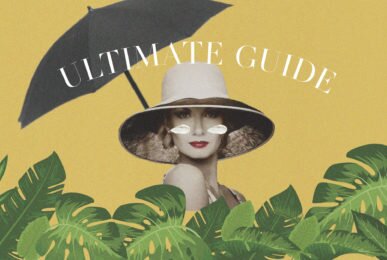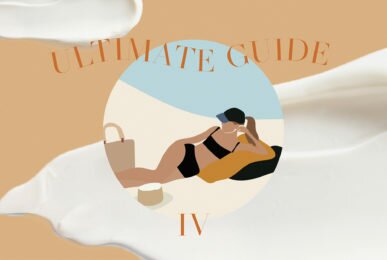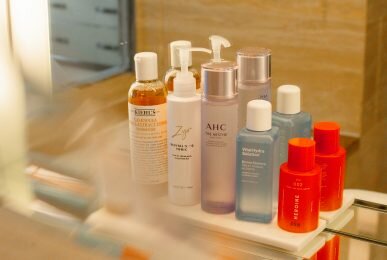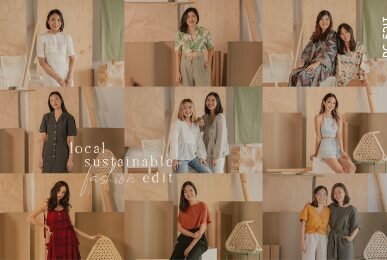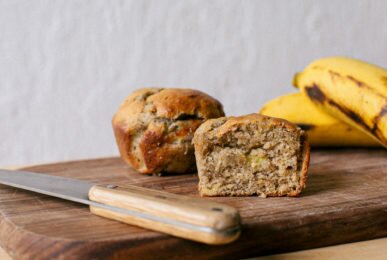In the third part of our Ultimate Sunscreen Guide (Read Part I and Part II if you haven’t already!), let’s take a closer look at what sunscreens protect us from. We’ll analyse the two main types of UV rays — UVA and UVB — their differences, what they are responsible for and how to effectively guard against them. Stay till the end for a quick guide to one of the newest trends in sunscreen: blue light protection.
A Quickie: What Is UV Radiation?


Ultraviolet (UV) radiation is a form of electromagnetic energy. UV rays can come from both natural, as well as artificial sources including the sun, lasers, black lights and tanning beds. However, the sun remains the most significant source of UV radiation.
UV rays are classified by wavelength (inversely proportionate to energy):
- UVA (longest wavelength)
- UVB (medium wavelength)
- UVC (shortest wavelength)
UVC rays have the shortest wavelength and highest energy among the three; it can cause ulcers, lesions and severe burns. The good news? We don’t have to worry about natural UVC rays, because they are completely filtered out by the atmosphere. That said, the sun emits two types of UV rays which reach us: UVA and UVB. It’s important to understand the differences between UVA and UVB to see why broad-spectrum* sun protection is so crucial, as well as how to get the most out of it!
(*Not quite sure what “broad-spectrum” sunscreen means? Keep reading for the answers you need!)
Need To Know Facts: UVA Rays
UVA rays make up 95% of the sun’s UV rays that reach us. They are present all the time, regardless of season or weather. Even on overcast days, UVA rays can penetrate clouds and are powerful enough to bypass clothing, as well as window glass. This is why we should also wear sunscreen in the car!
UV rays penetrate deeper than UVB rays to affect cells in the deeper layers of our skin. They’re responsible for premature aging (due to sun exposure), which can manifest in the appearance of wrinkles, dark spots and leathery skin. While these signs of aging may only show with time, the other effects of UVA rays often appear right away. UVA rays can cause an immediate tan — which is why they are the main type of light used in tanning beds. Unfortunately, while getting sunburnt hurts, getting a tanning doesn’t, making it hard to feel the damaging effects of UVA rays.
But it’s a silent killer. We now know that just by having one indoor tanning session before the age of 35, can increase the risk of developing skin cancer by a startling 75%!
Need To Know Facts: UVB Rays
UVB rays make up the remaining 5% of the sun’s UV rays that reach us. In short, they are what’s responsible for sunburns. Although, unlike UVA rays, UVB rays are not ever present at the same intensity all year round. They are stronger in sunny climates, but can still reflect off water/snow/sand and cause a sunburn during winter (so wearing sunscreen all year round is still important).
UVB rays do not penetrate as deeply as UVA rays and mainly damage cells in the outermost layer of skin. They are responsible for causing most skin cancers, but can also contribute to premature aging (though this is still mostly the work of UVA rays).
How To Protect Yourself: Broad-Spectrum Sunscreen
Since the damage caused by UVB rays can be easily felt (and often more quickly), it’s easy to focus one’s sun care routine on protecting against UVB. Tips like avoiding midday sun and wearing a sun hat mainly address (though inadequately) the issue of UVB rays. In fact, the SPF ratings of sunscreens also concern UVB rays — they basically tell you how well a sunscreen will protect you from getting sunburnt. (Psst! For the full facts on SPF numbers, read Part I of our sunscreen guide.)
To ensure you’re getting protected from both UVA and UVB rays, you’ll want to use sunscreens labeled ‘broad-spectrum’ as part of your everyday routine. No compromises!
New On The Block: Blue Light
Now that we know the invisible ultraviolet rays emitted by the sun (UVA and UVB), what about visible light rays? Visible sunlight contains different coloured light rays in many shades of red, orange, yellow, blue and green. In recent years, blue light — or HEV light — has become the newest wavelength of light to be concerned about.
What Is Blue Light?
For starters, blue light is everywhere. The sun is the main source of blue light, although there are numerous man-made indoor sources, such as LED screens and fluorescent lighting. Given that the screens of our laptops, computers and smartphones emit significant amounts of blue light (but still a fraction of that emitted by the sun), we’re actually getting quite the exposure everyday!
Why Is Blue Light Bad?
Blue light has gained quite the notoriety for its damaging effects on vision, including contributing to digital eye strain and macular degeneration. While research is still underway to ascertain the effects of blue light on skin, experts believe blue light can harm us the same way as UVA/UVB rays do. Hence, leading to premature aging, hyper-pigmentation and inflammation. Since blue light penetrates into deeper layers of the skin compared to UVA/UVB, some experts also believe its potential effects could be worse.
Blue Light Protection In Sunscreen?
Not all standard broad-spectrum sunscreens offer blue light protection. Your best bet would be choosing a sunscreen that is also specifically designed to protect against blue light. Not sure where to start? Stay tuned to Part IV of our sunscreen guide for our top SPF picks, including the best in blue light protection!
—
Stay tuned to Part IV of our Ultimate Sunscreen Guide for the low-down on SPF you need to know!
Take care,
Melisa





